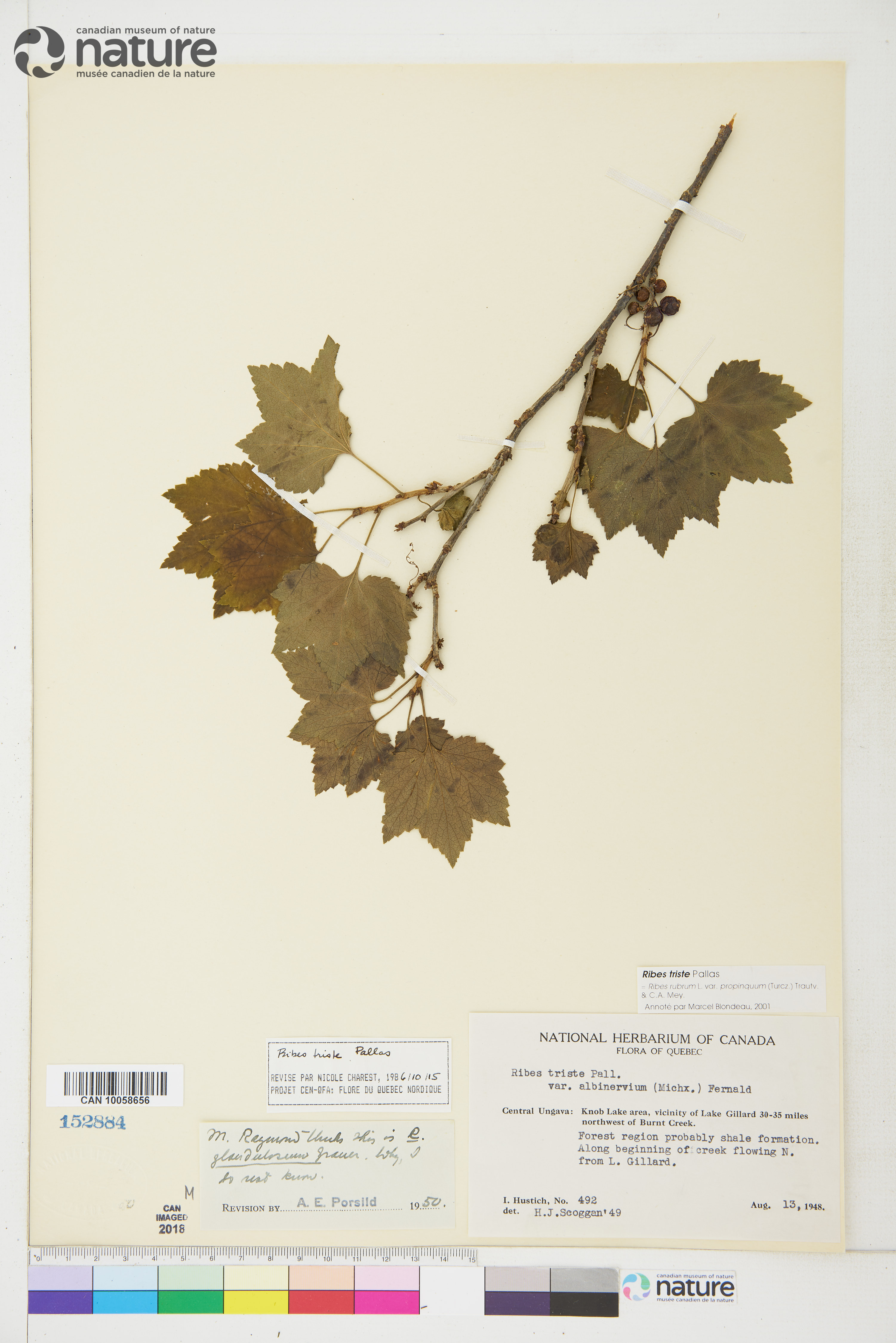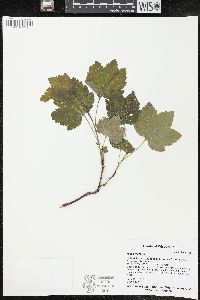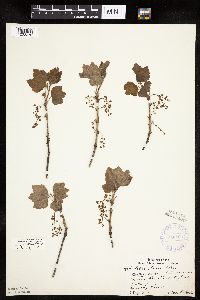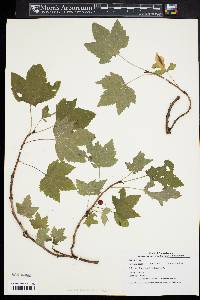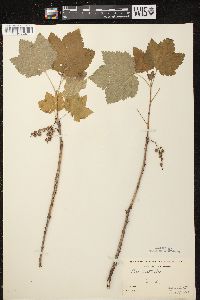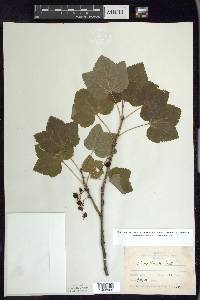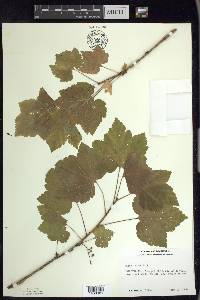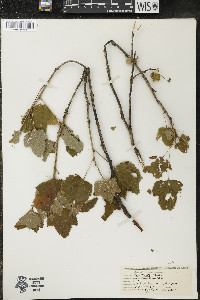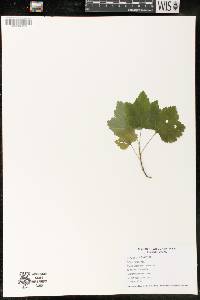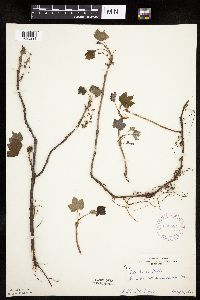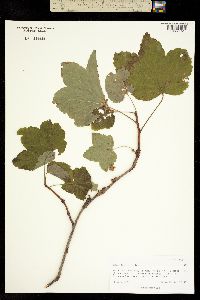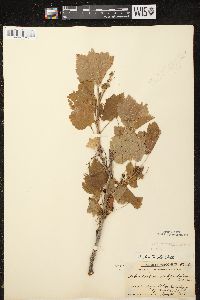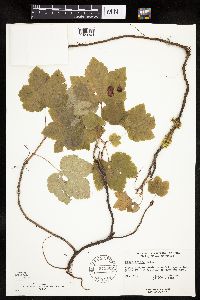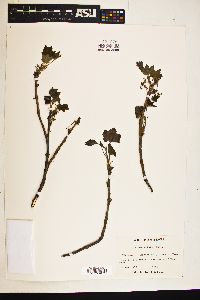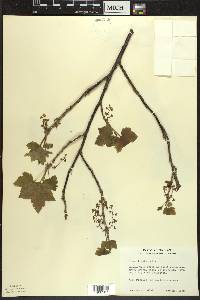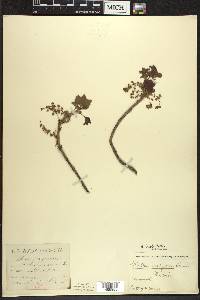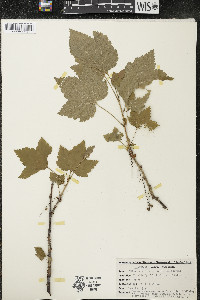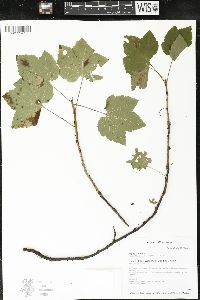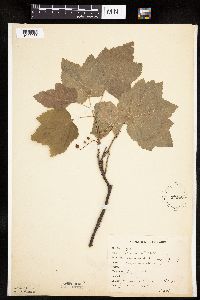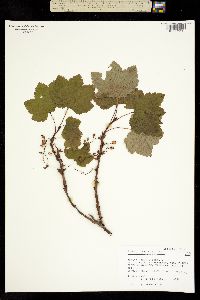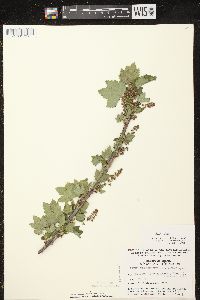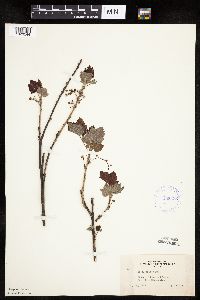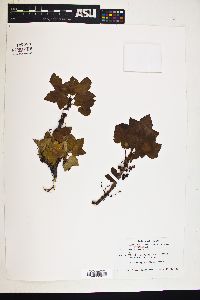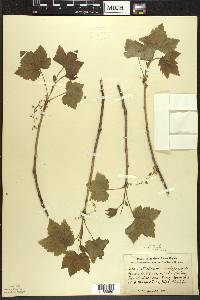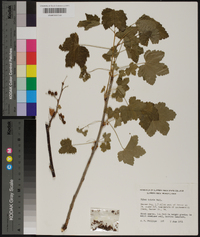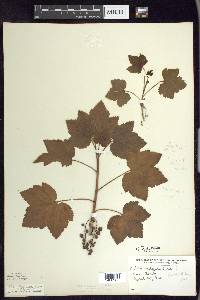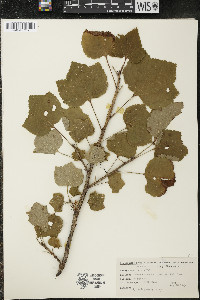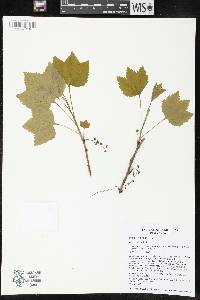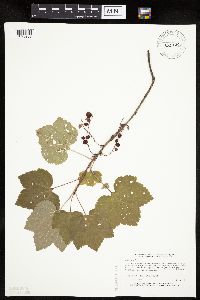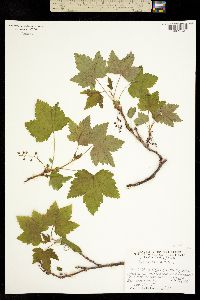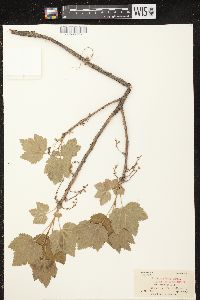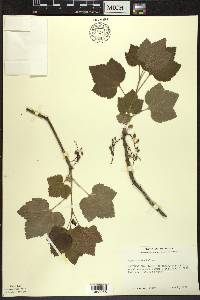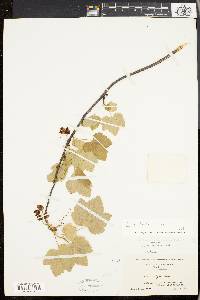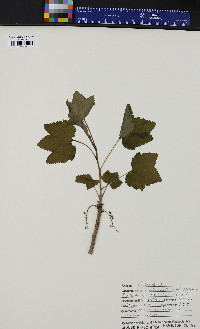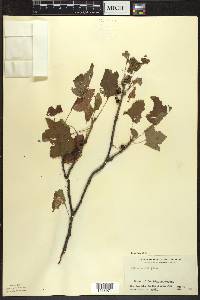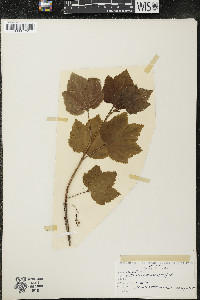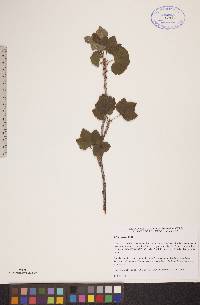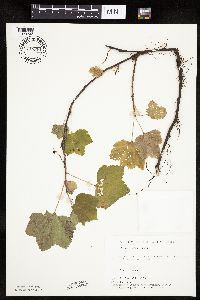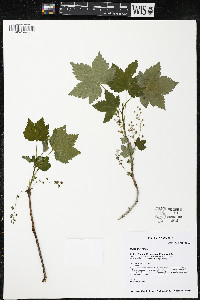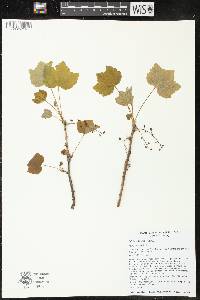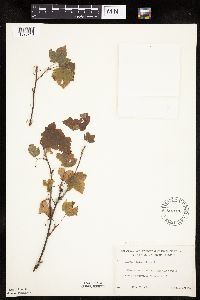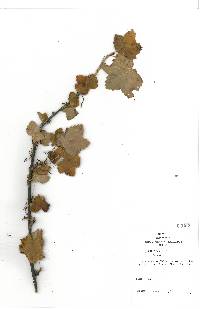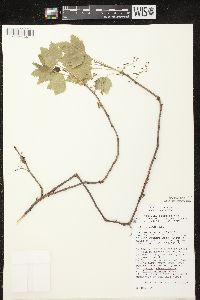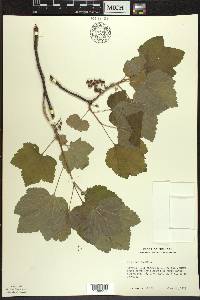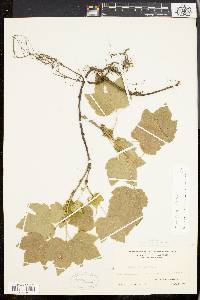Ribes triste
|
|
|
|
Family: Grossulariaceae
Swamp Red Currant
[Ribes albinervium Michx., moreRibes migratorium Suksd.] |
Plants 0.3-1 m. Stems straggling, ascending, or prostrate, glabrous or sparsely crisped-puberulent with scattered short-stipitate glands; spines at nodes absent; prickles on internodes absent. Leaves: petiole 3-6 cm, puberulent with stalked glands; blade pentagonal with nearly parallel sides, 3-5-lobed, cleft less than 1/2 to midrib, 2 middle sinuses deepest, to 8.5 cm, base broadly truncate to shallowly cordate, surfaces not glandular, ± hairy abaxially, glabrous adaxially, lateral lobes (directed forward), broadly triangular to ovate-triangular, margins coarsely bicrenate-dentate, apex acute. Inflorescences pendent, 6-13-flowered racemes, 3-5 cm, axis glabrous or sparsely pubescent, glands short-stipitate, flowers evenly spaced. Pedicels jointed, 1-4 mm, short stipitate-glandular; bracts ovate-orbiculate to oblong, 1.5-2 mm, stipitate-glandular. Flowers: hypanthium dark reddish purple or greenish white and strongly purplish-maculate or tinged, saucer-shaped, to 1 mm, glabrous; sepals with adjacent lobes overlapping, spreading, greenish purple, cuneate-rhombic, 2 mm; petals widely separated, erect, reddish purple, spatulate, not conspicuously revolute or inrolled, 1 mm; nectary disc prominent, reddish purple, 5-lobed, covering top of ovary; stamens nearly as long as petals; filaments linear, 0.2-0.5 mm, glabrous; anthers white, transversely oblong-cordate, 0.2-0.3 mm, apex shallowly notched (anther sacs almost adjacent); ovary glabrous; styles connate 1/3-3/4 their lengths, 1-1.2 mm, glabrous. Berries sour-tasting, red, ovoid, 6-10 mm, glabrous. Flowering May-Jul. Bogs, wet coniferous woods, coniferous hardwoods, stream banks, seepage areas, montane rock slides; 0-1200 m; Alta., B.C., Man., N.B., Nfld. and Labr., N.W.T., N.S., Nunavut, Ont., P.E.I., Que., Sask., Yukon; Alaska, Conn., Idaho, Ill., Maine, Md., Mass., Mich., Minn., Mont., N.H., N.J., N.Y., N.Dak., Ohio, Oreg., Pa., R.I., S.Dak., Vt., Wash., W.Va., Wis.; Asia. Shrub to 0.5 m tall Leaves: alternate, stalked, 5 - 10 cm wide, palmately three- to five-lobed (mostly five-lobed), nearly round to heart-shaped, palmately veined, toothed, thin, sometimes softly hairy beneath. Terminal leaf lobe straight-sided. Inflorescence: a small, drooping cluster (raceme) of many flowers, 3 - 9 cm long, glandular. Flowers: greenish purple to purple. Stalk 1 - 4 mm long, often with short-stalked glands. Stamens five. Styles two, deeply divided. Sepals: forming a short, five-lobed tube (calyx). Calyx greenish purple to purple, disc-shaped. Lobes spreading, to 2 mm long, broadly egg- to diamond-shaped with a blunt apex. Petals: five, in the throat of the calyx tube, purplish, to 1 mm long, with a tapering base and flattened or notched apex, alternate with calyx lobes. Disk low, shaped like a broad pentagon. Fruit: a hard berry, many-seeded, crowned by the shriveled calyx, red, 6 - 8 mm wide, smooth. Branches: straggling, without spines. Similar species: The similar Ribes americanum and R. nigrum differ by having black berries and leaves with yellow, resinous dots. Ribes rubrum is also similar but has non-glandular flower stalks and a curved-sided terminal leaf lobe. Flowering: May to June Habitat and ecology: Rare, though apparently native to the Chicago Region. Has been found near a degraded seep. May also be found in other wet habitats. Occurence in the Chicago region: native Etymology: Ribes comes from the Arabic name for a shrub that has acidic fruit. Triste means dull or sad. Author: The Morton Arboretum Unarmed straggling shrub; lvs glabrous to softly hairy beneath, broadly truncate to shallowly cordate at base, mostly 5-lobed, the lobes toothed from sinus to tip, the two middle sinuses the deepest, the lateral lobes direct forward; racemes drooping, the axis and pedicels (1-4 mm) often with short-stipitate glands; hypanthium above the ovary saucer-shaped, less than 1 mm; sep greenish-purple, broadly rhombic-ovate, 2 mm; pet cuneate, 1 mm, truncate or notched; fr red; 2n=16. Bogs and wet woods; Nf. to Alas., s. to N.J., Mich., Wis., Minn., and Alta.; n. Asia. June, July. Gleason, Henry A. & Cronquist, Arthur J. 1991. Manual of vascular plants of northeastern United States and adjacent Canada. lxxv + 910 pp. ©The New York Botanical Garden. All rights reserved. Used by permission. |

